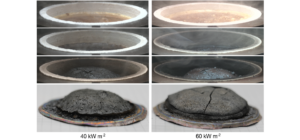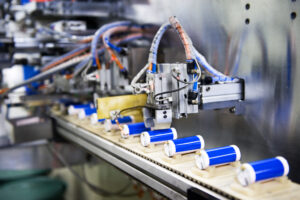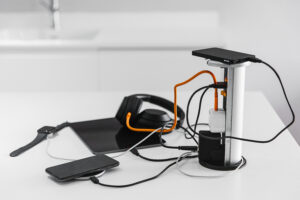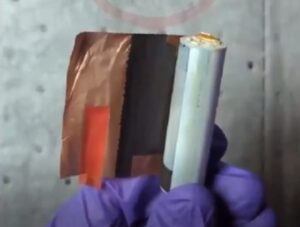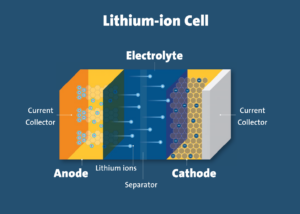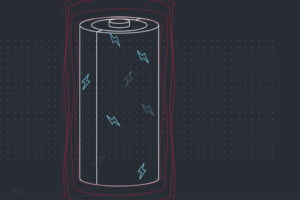What Keeps Lithium-Ion Batteries Safe?
Original branded cells and batteries with authentic safety marks have undergone extensive testing and are certified by approved accredited labs. Counterfeiters do not go to the trouble of extensive testing and certifying the cells and batteries to the required standards.
Learn more about the various safety mechanisms that go into properly manufactured and certified lithium-ion cells and batteries – helping to prevent hazards while keeping you and your devices safe –
Cell-level safety mechanisms
The cell is a single- unit device that converts chemical energy into electrical energy.
Separator
Inside the cell, the cathode (+) needs to be physically separated from the anode (-), which is achieved by using a polymeric material as a separator. The separator provides the passage of ions but is electrically non-conductive.
Central Metal Mandrel
The cathode, anode and separator are rolled together to form the electrode stack. At the center of the electrode stack is the Central Metal Mandrel. It ensures that if gases escape, they can be directed and vent properly, and not cause deflagration (expulsion of cell content).
Positive Temperature Coefficient (PTC)
PTC helps to protect from external electrical shocks, which can cause a short circuit. It consists of two flat stainless steel rings sandwiching a polymeric material only a few microns thick, providing a specifically tuned level of resistance. In case of unusually high heat, the polymer expands, thus reducing the amount of current going into and out of the cell. It is exactly optimized to the heat and current limits of the cell in question.
Current Interrupt Device (CID)
The CID helps protect from overcharging in potential overvoltage situations. This sophisticated mechanical device consists of two disks touching each other mechanically at only one point. When gas is produced in the cell during overcharge/overvoltage conditions, the pressure inside the cell increases that will cause one of the disks to flip and lose physical contact, which means the cell can no longer conduct electricity, thus protecting consumers from potential harm.
Battery-level safety mechanisms
A battery is a combination of one or more cells electrically connected to work together to produce electric energy.
Battery Management System (BMS)
The BMS includes a smart circuit board that provides protection against off-nominal conditions such as overvoltage, undervoltage, overcurrent and overtemperature. The electronic components on the smart circuit board are chosen for each battery type to work safely in the relevant application.
Keep safe!
These are just some of the many safety features integrated into authentic, safety-tested lithium-ion cells and batteries. Fitting cells into a compact battery takes a lot of expertise and ongoing research. Counterfeiters will claim they have these features, but they don’t. Buying authentic cells and batteries keeps you safe and helps support the important research and development efforts going into continuously improving battery safety and performance.
Learn more about the dangers of counterfeit batteries and how to avoid buying them in our expert insight by Dr. Judy Jeevarajan, vice president and executive director of our Electrochemical Safety Research Institute (ESRI).
PUBLISHED
